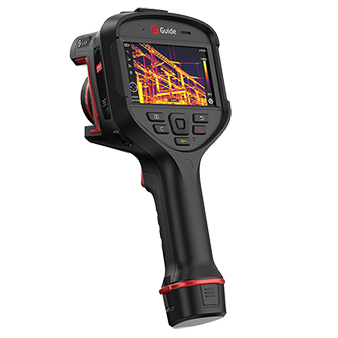
# Infrared Thermal Imaging Camera: Advanced Technology for Temperature Detection
## Introduction to Infrared Thermal Imaging
Infrared thermal imaging cameras have revolutionized the way we detect and measure temperature in various applications. These advanced devices capture infrared radiation emitted by objects and convert it into visible images, allowing users to visualize temperature differences with remarkable precision.
## How Infrared Thermal Cameras Work
At the core of infrared thermal imaging technology is the ability to detect electromagnetic radiation in the infrared spectrum. Every object with a temperature above absolute zero emits infrared radiation, and thermal cameras are designed to capture this invisible energy.
### Key Components of Thermal Imaging Systems
– Infrared detector (usually microbolometer-based)
– Optical system with specialized lenses
– Signal processing electronics
– Display unit for thermal visualization
– Software for image analysis and reporting
## Applications Across Industries
Infrared thermal imaging cameras find applications in numerous fields, proving their versatility and importance in modern technology.
### Industrial Maintenance
Thermal cameras are invaluable for predictive maintenance, allowing technicians to identify overheating components in electrical systems, mechanical equipment, and industrial processes before failures occur.
### Building Inspection
In construction and facility management, thermal imaging helps detect:
- Heat loss through insulation gaps
- Moisture intrusion in walls
- HVAC system inefficiencies
- Electrical faults in wiring
### Medical and Healthcare
Medical infrared imaging provides non-invasive diagnostic capabilities for various conditions, including inflammation detection, circulatory problems, and fever screening.
## Advantages of Modern Thermal Imaging Technology
Today’s infrared thermal imaging cameras offer significant benefits over traditional temperature measurement methods:
1. Non-contact measurement – Allows temperature reading from a safe distance
2. Real-time visualization – Provides immediate thermal data
3. Large area coverage – Can scan entire surfaces quickly
4. Quantitative analysis – Offers precise temperature measurements at multiple points
## Choosing the Right Thermal Imaging Camera
When selecting an infrared thermal imaging camera, consider these factors:
Resolution
Higher detector resolution provides more detailed thermal images with better temperature measurement accuracy.
Keyword: infrared thermal imaging camera
Temperature Range
Ensure the camera covers the temperature range needed for your specific applications.
Sensitivity
Look for cameras with high thermal sensitivity (low NETD values) for detecting subtle temperature differences.
Additional Features
Modern cameras may include:
- Wi-Fi connectivity
- Image fusion capabilities
- Advanced analytics software
- Rugged designs for harsh environments
## Future Trends in Thermal Imaging
The infrared thermal imaging camera market continues to evolve with emerging technologies:
1. AI-powered analysis – Machine learning algorithms for automatic fault detection
2. Miniaturization – Smaller, more portable thermal cameras
3. Smartphone integration – Affordable thermal imaging attachments for mobile devices
4. Enhanced resolution – Continued improvement in detector technology
## Conclusion
Infrared thermal imaging cameras have become essential tools across multiple industries, offering unparalleled capabilities in temperature detection and visualization. As technology advances, these devices will become even more accessible, accurate, and integrated into our daily professional and personal lives. Whether for industrial maintenance, building inspection, or medical applications, thermal imaging provides critical insights that were previously impossible to obtain.